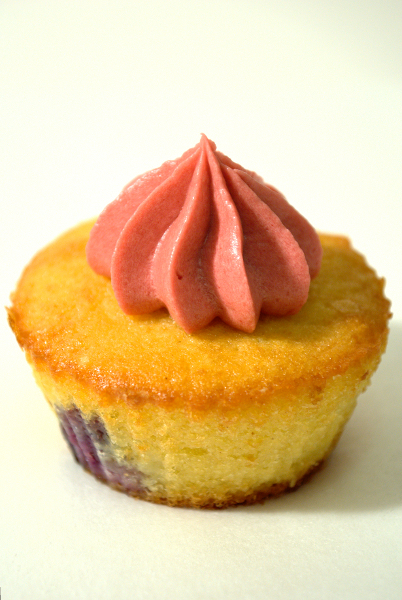A case for cupcakes
I’m not a great baker of cakes, but for a long time I had been meaning to try out some of the amazing recipes on the Cupcake Bakeshop blog (no longer being actively maintained, sadly). I’ve had a couple of goes at the almond and ricotta cakes, with a reasonable degree of success.
I’ve abandoned the traditional paper cupcake cases, which seem always to produce very shallow, flared cakes. I’ve started using my daughter’s silicone baking cases instead, which are a bit deeper and more upright. Because the rubber is stiffer and heavier than the usual thin paper, I also find it easier to spoon the batter into them. I don’t like using rubber moulds for bread, partly because silicone is a very efficient thermal insulator. Bread needs lots of heat, so it doesn’t make much sense to place an insulating material around it. Cakes, on the other hand, benefit from more gentle baking, so the insulating properties of silicone rubber aren’t a problem.
The recipes on Cupcake Bakeshop are in US measurements, which I’ve tried to convert to metric weights – an uncertain operation because converting volumes into weights always ends up being somewhat subjective. Here is the formula I ended up with:
112g ground almonds
120g ricotta cheese
220g caster sugar
112g butter, softened
4 eggs
85g plain flour
Half teaspoon baking powder
A handful of raspberries or blueberries (or whatever you dare to use. Or nothing, if you prefer).
This makes at least a dozen cupcakes, potentially quite a lot more depending on the size of your cases.
Mix the almonds, sugar and cheese together in a bowl to make a paste. Mix in the softened butter gradually, about a tablespoon a time; an electric mixer on a low speed makes this quicker and easier.
Beat the eggs until the yolks and white are combined and incorporate them into the batter a tablespoon at a time, again using a mixer if you have one. This is the stage in cake-making when the mixture is likely to curdle, turning from smooth and homogenised into coarse and grainy-looking. It’s difficult to prevent this happening, no matter how slowly you add the eggs. Although many authorities claim that curdled mixtures make for tougher cakes, I’ve never noticed the slightest difference, and my displeasure at curdling is entirely aesthetic. The only other reason for adding the eggs gradually is because it makes incorporating them easier.
Now just fold in the flour and baking powder. If you are using fruit or another solid addition, fold it into the mixture at this point. Tossing it in a little flour can help stop it from settling to the bottom of the cakes during baking, if that’s something you particularly want to avoid.
Spoon the batter into cases – they don’t rise that much, so I fill them about three-quarters. This is approximate because the stiff batter doesn’t settle and seek its own level, although with rubber cases it is easier to smooth the tops with a small spatula or the back of a teaspoon (dip it in water to prevent the mixture sticking to it) to get a better idea of how full the case is.
Bake at 180°c for about 20 minutes, until just turning brown. The time-honoured test of when a cake is baked through is when a metal skewer or similar poked through the middle comes out without any liquid batter clinging to it.
Cool the cakes on a rack – if using silicone moulds, I remove them once the cakes are cool enough to handle, as they sweat somewhat.

The frosting was improvised with butter, left over ricotta cheese and icing sugar – I didn’t record the proportions, but it’s not bad. Substituting mascarpone for ricotta would probably work better. I used a large star nozzle to squirt a rosette on top of each one, which is about as far as my piping skills extend at present.
I do intend to give my daughter her cupcake cases back and get some of my own. Eventually.
